Case study: Life course studies - from mini golf to listening in the dark...
At FF, we describe ourselves as a ‘digital story studio’. But sometimes digital isn’t the answer. For us, public engagement projects are always about balancing the needs of the audience with whatever research we’ve been tasked with engaging them with.
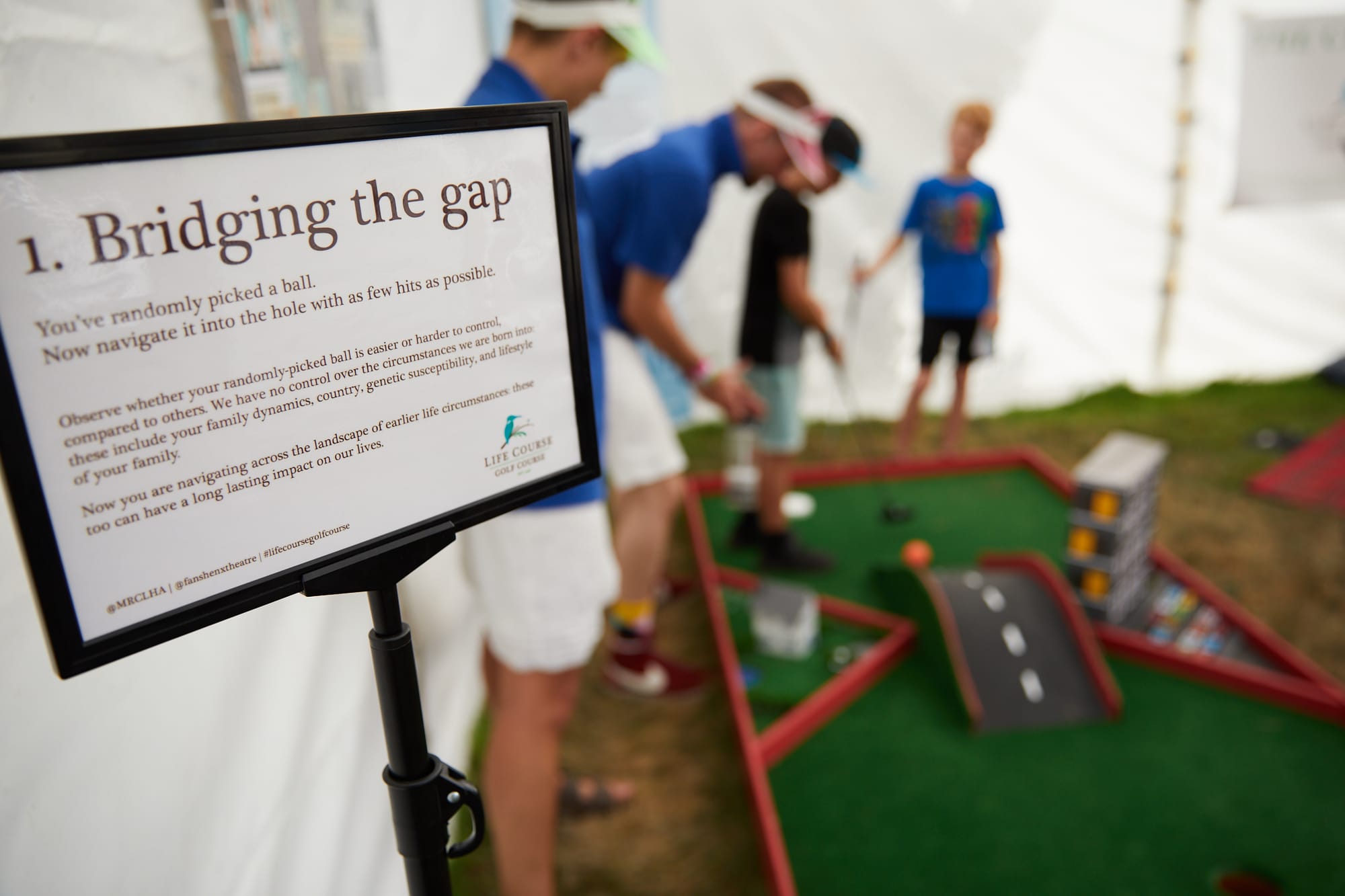
At FF, we describe ourselves as a ‘digital story studio’. But sometimes digital isn’t the answer. For us, public engagement projects are always about balancing the needs of the audience with whatever research we’ve been tasked with engaging them with. This case study is about two projects we’ve made with Dr Sarah-Naomi James which, from the outside, couldn’t look more different. And that’s because they both started with thinking hard about the audience.
Sarah is part of the MRC Unit for Lifelong Health and Ageing at UCL. Her research investigates life course predictors of cognitive ageing and neuroscience-related outcomes. When we started collaborating with her she was working on Insight 46, which works with a subset of participants from a cohort life study which started in 1946. Cohort Life Studies or Life Course studies are when scientists follow a group of people through their whole life, studying them at regular intervals. People tend to be familiar with this idea because of TV documentaries like the Up series, which followed a group of 14 people from age 7 (in 1964) to the most recent episode in 2019, when the subjects were 63. The cohort study that began in 1946 had a whopping 5,362 participants - you can read more about it (and subsequent cohorts) in Helen Pearson’s excellent book The Life Project.
But while people intuitively understand the concept and benefits of a life course study, engaging with the scientific findings is potentially very depressing. The big takeaway can be summarised as ‘don’t be born into poverty’ - or as Helen Pearson articulates it: ‘study after study from the cohort has shown that those born into the lower classes have been more likely to develop almost every problem in the medical book.’ While there are factors that people have control over (e.g. diet, exercise), it will come as no surprise that kids who’ve had to contend with structural deprivation since day 1 will experience poorer health than kids who’ve good nutrition and care from adults who have time to support and encourage their development. It’s bleak - and while scientists have known this for years, governments are slow to intervene in sustained and meaningful ways. But that’s another story (or rant).
So when communicating about Life Course Studies there’s a real need for sensitivity: to acknowledge the structural factors but avoid giving the message that people’s health outcomes are predestined, mapped out before they even start life. We also knew we’d be engaging with a really varied audience, as the brief of the first project was to make an activity for Einstein’s Garden, a science-focused zone of the music festival Green Man. Einstein’s Garden also had a commitment to bringing the actual researchers into contact with the public, rather than just the science. As much as anything, that meant the task was to design a context in which people who may not be super-confident to chat away to the public felt supported to do so; about giving them a clear role but also ensuring that people are having a nice time, because then they’ll be receptive to the researchers! FF had made various projects for Green Man so we knew that the audience would be keen and interested but also ranging from 2 years old to 80 years old, unwilling to stick with something if it didn’t hold their attention (there’s so much to do at Green Man), and perhaps a few pints of cider down.
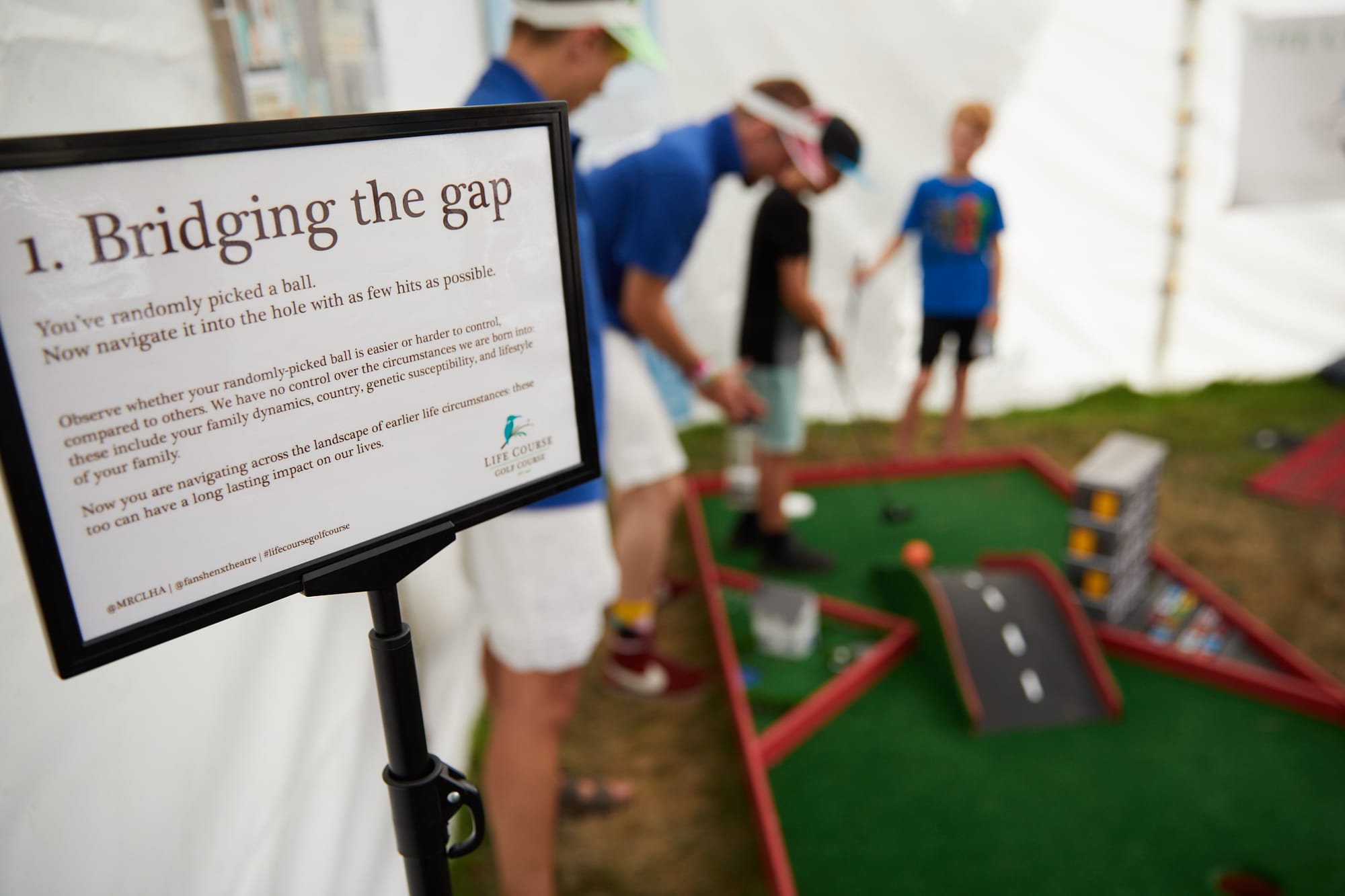
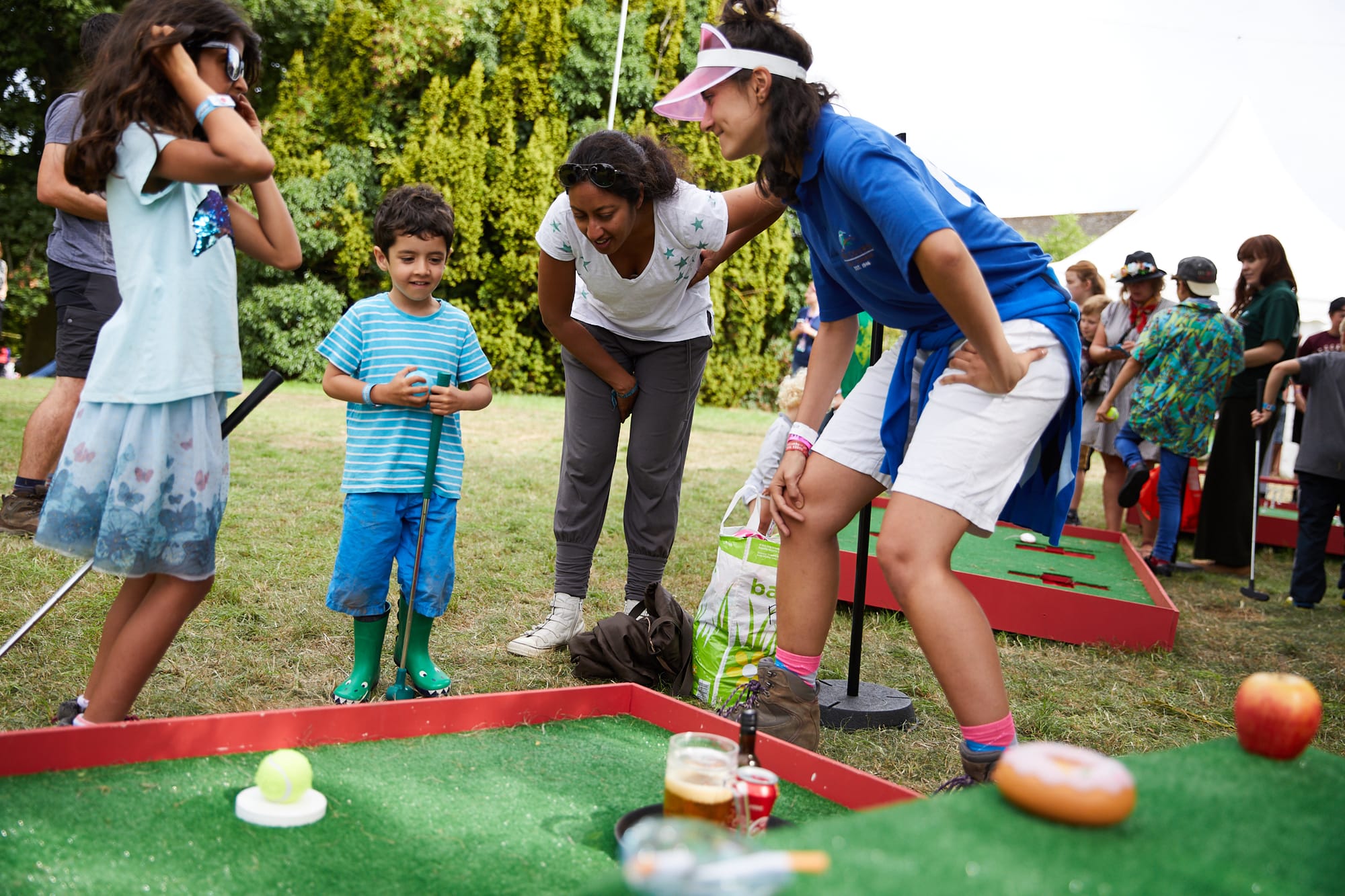
So after several meetings with Sarah and the other researchers, Life Course Golf Course was born - a mini-golf course which physicalised different factors affecting health outcomes over the life course, from bone density, to behavioural factors like drinking alcohol, to stressful life events like moving house or having a baby. Players picked their ball in a blind un/lucky dip - with different kinds of ball symbolising the fact that we don’t have any control over the situation that we’re born into.
The researchers acted as caddies, complete with branded shirts and visors, retrieving lost balls and explaining the significance of different obstacles on the course. Casting them as caddies gave them a role. There were always people in queues to talk to - it turns out that mini golf is extremely popular (my suspicion is that’s because it’s not really a game of skill so people don’t feel intimidated the way they do by other sports!) It’s also pretty accessible to people of all ages and mobilities.
Life Course Golf Course was a big hit at Green Man, packed throughout the festival. We subsequently took it to the Science Museum Lates and it was shortlisted for the UCL Provost’s Awards for Public Engagement.
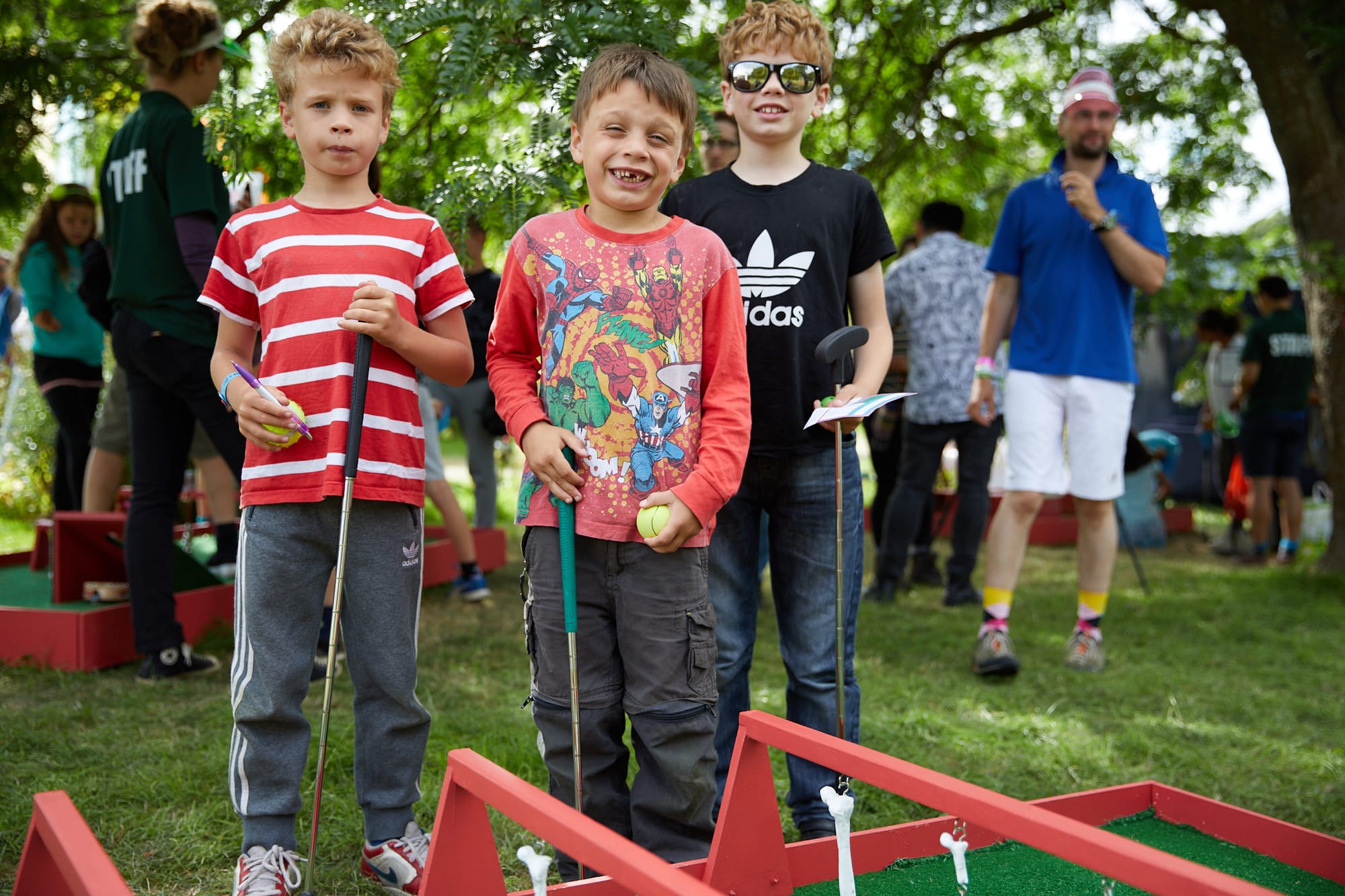
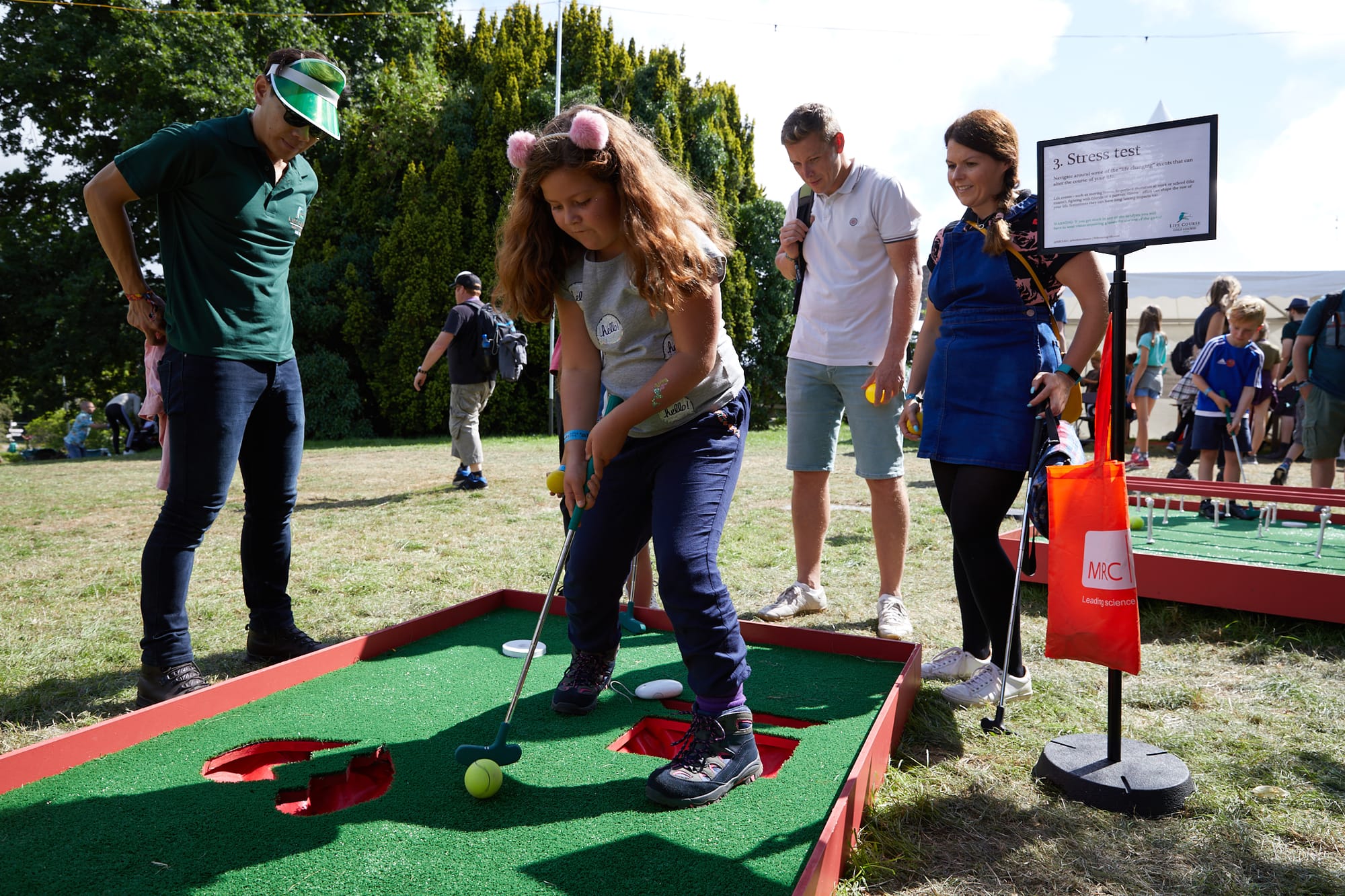
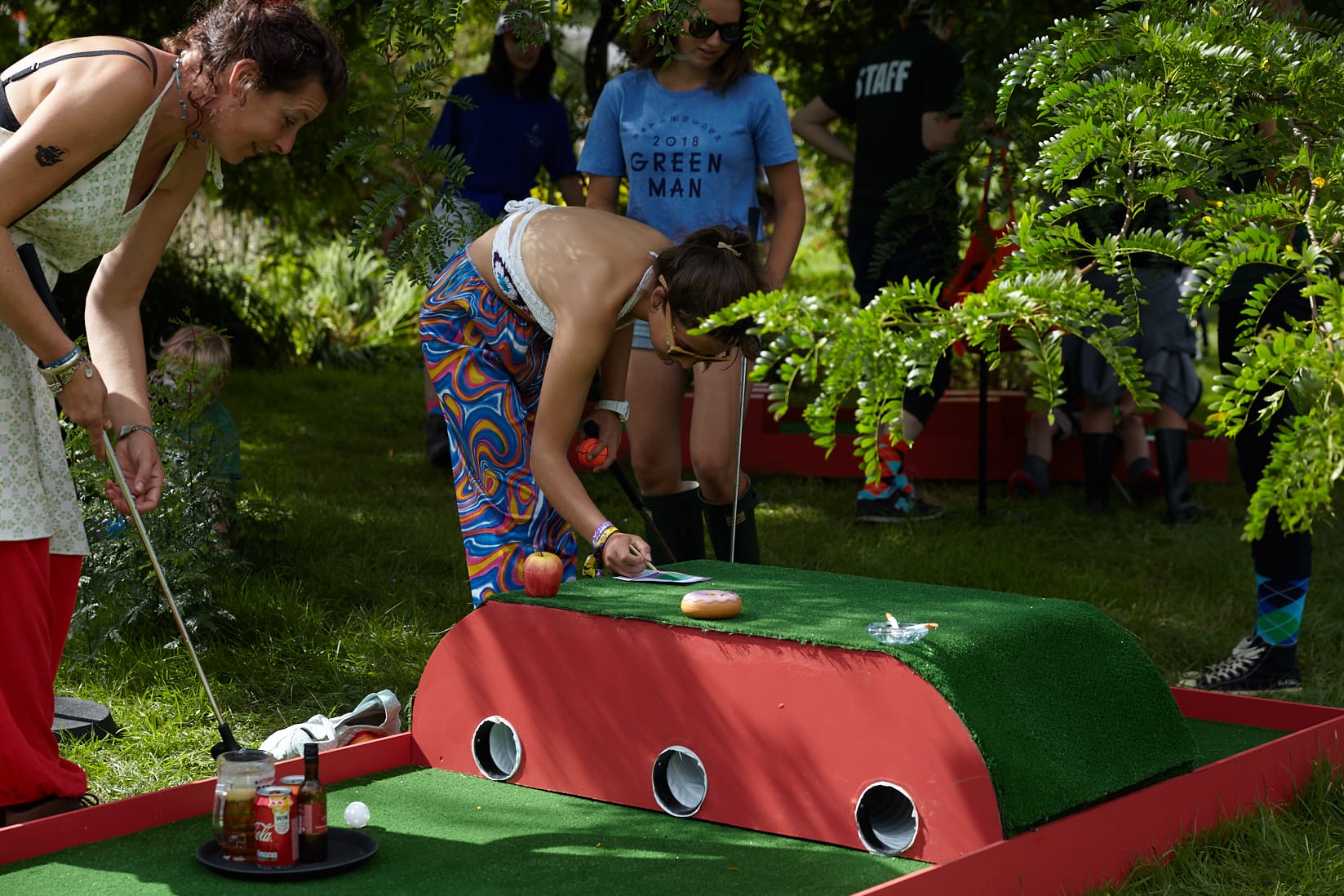
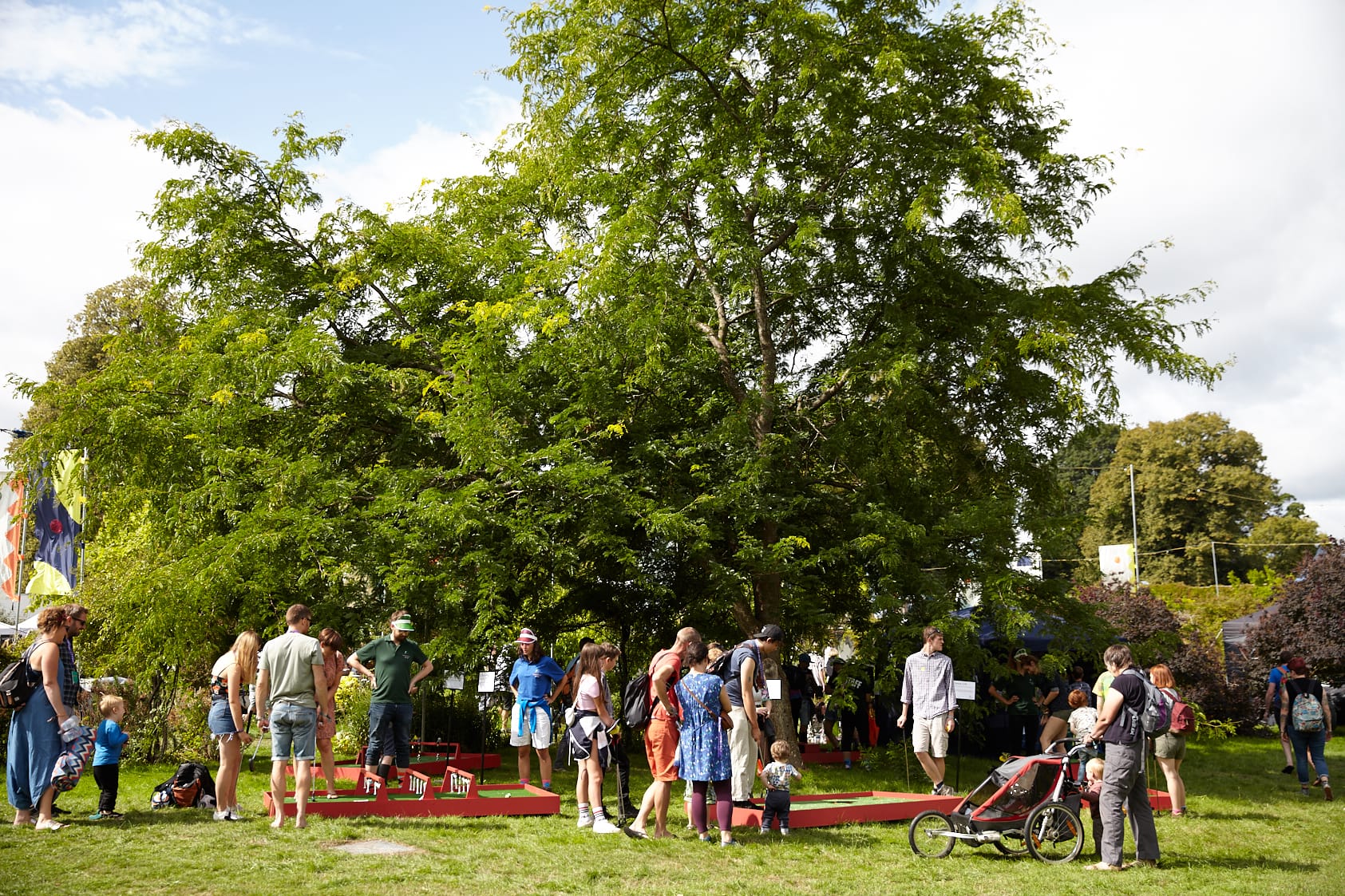
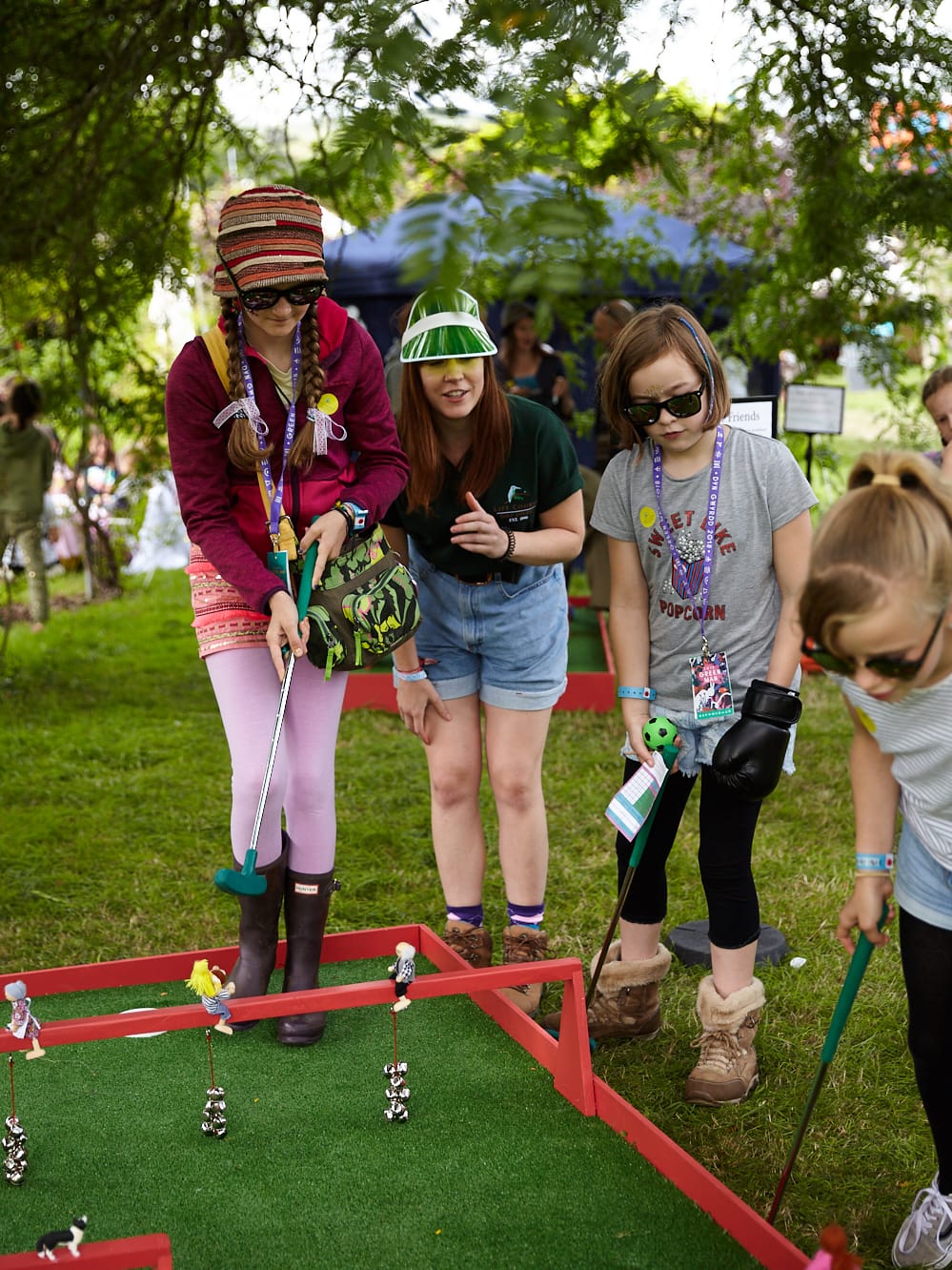
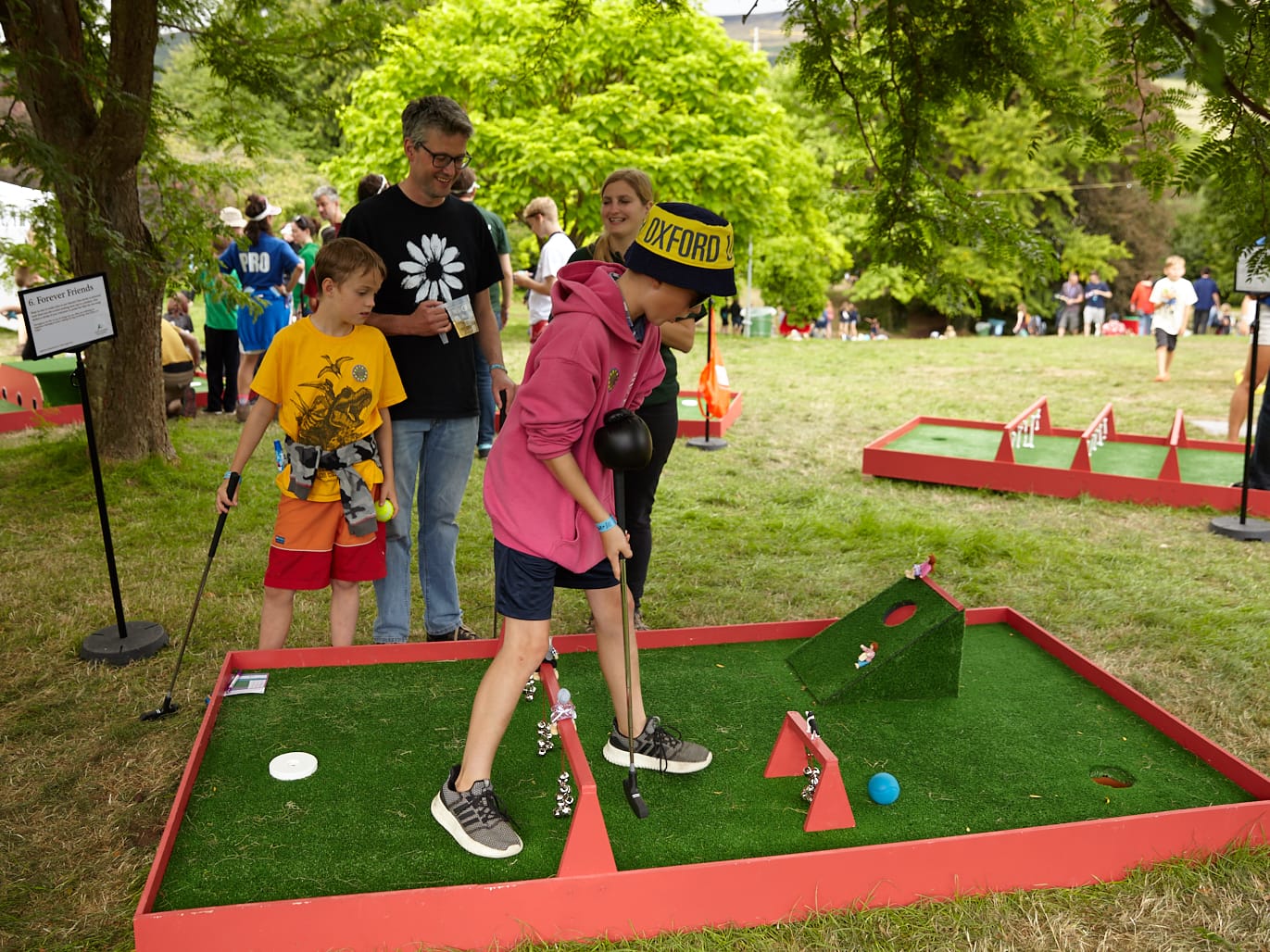
Digital activities are great, especially if you want data back from the people you’re engaging with, but sometimes the setting and audience demand a physical activity. I think there’s something about an activity as ridiculous as trying to whack a ping pong ball through a bridge made of model donuts that opens people up to very human conversations. The fact that people played it in small groups of friends or family made the life course study methodology of comparisons over time relatable, as players were already comparing their reactions to the factors symbolised by objects on the golf course.
Our second collaboration with Sarah was the recipient of one the Alzheimer’s Research UK Inspire Awards. The Window is an immersive audio experience blending story, music and spatial sound. Love and grief; memory and science. Designed to be listened to solo and in the dark, audience members find themselves at the heart of a story about the things families don’t talk about. Spanning three generations and 40 years, it asks what we inherit from the past and what control we have over the future.
The Window was a project I really resisted. I wanted to work with Sarah again but I did not want to spend time thinking about Alzheimer’s. In a way, the journey we went on to be able to make The Window is reflected in the form of the experience. With some subjects, creating a social experience designed to be enjoyed by a group really adds to the impact. For this, we felt that just putting yourself in the space of thinking about this subject was exposing enough - social pressure to react in a certain way would actually be an obstacle to engaging with the ideas.
We asked audiences to listen blindfolded or in the dark, to increase the impact of the binaural sound but also to remove the temptation of scrolling your phone to avoid having to listen completely. We wanted people to let themselves be completely immersed in thinking about this subject: the experience aims to dispel popular misconceptions about Alzheimer’s disease, and to spread hope about the research taking place in this field. The Window is always accompanied by a debrief session with researchers, which allows members of the public to ask questions that the artistic experience has brought up for them. It allows deeper engagement but is also an act of care.
The Window premiered as part of Alzheimer’s Research UK’s annual conference in 2021, with online listening sessions as this was mid-pandemic. We’ve also presented it at physical ‘listening parties’ with post-listen Q&As.
I often find it hard to describe FF’s work. Different projects take different forms because different audiences and bodies of knowledge have different needs. If we’re serious about democratising science then we need to put audiences at the centre of what we do. Although I’m not in a hurry to build a mini-golf course again any time soon!

